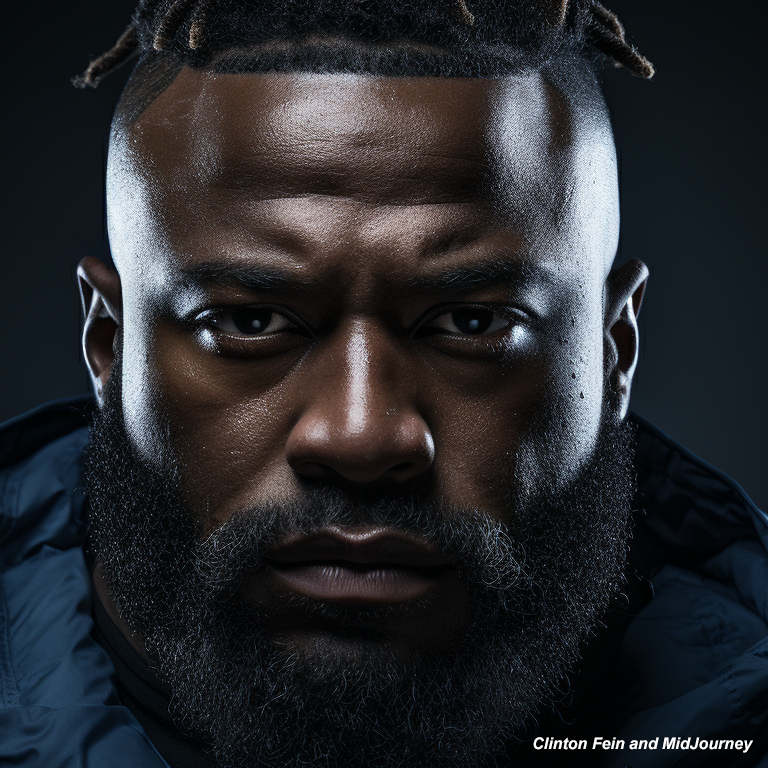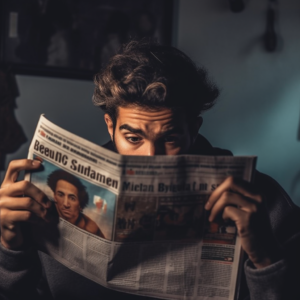
AI and the Almighty Prompt
Reimagining Copyright, Ownership, Creativity, and Legality
The Interplay Between AI and the Initial Prompt
AI-generated art is a product of sophisticated algorithms trained on vast datasets, enabling machines to learn patterns, styles, and techniques from existing art. However, AI does not create art entirely from scratch; it relies on an initial prompt provided by a human. This prompt serves as the guiding inspiration, fueling the AI’s creativity and shaping the direction of the final artwork. Therefore, AI-generated art cannot exist without the initial input from a human prompter.
AI as a Tool for Amplifying Creativity
Rather than diminishing human creativity, AI serves as a powerful tool for amplifying and enhancing it. The collaboration between AI and the prompter encourages artists and creators to think more deeply about their initial concepts, as they know that the AI will expand and refine their ideas. This synergy between human imagination and machine capabilities results in the production of art that might not have been possible without the AI’s involvement.
Ownership and Copyright Challenges
 The partnership between AI and the prompter raises complex issues surrounding copyright ownership. Traditionally, artists retain copyright over their creations, protecting their exclusive rights to reproduce, distribute, and display their work. However, the presence of AI complicates this concept. In the case of AI-generated art, the AI plays an active role in the creative process, leading to debates about who should claim ownership – the AI, the prompter, or a combination of both.
The partnership between AI and the prompter raises complex issues surrounding copyright ownership. Traditionally, artists retain copyright over their creations, protecting their exclusive rights to reproduce, distribute, and display their work. However, the presence of AI complicates this concept. In the case of AI-generated art, the AI plays an active role in the creative process, leading to debates about who should claim ownership – the AI, the prompter, or a combination of both.
Some argue that since the AI is merely executing instructions based on the initial prompt, the prompter should maintain sole ownership. Conversely, others contend that AI’s contribution is not mere execution but a transformative process that warrants shared ownership. This blurring of lines between human and machine authorship challenges existing copyright laws and calls for novel approaches to recognize both AI and human contributions.
Creativity and the Notion of Authorship
AI-generated art also prompts us to rethink the traditional concept of authorship. The collaborative nature of AI-generated art highlights that creativity is not confined to the realm of human intelligence alone. AI’s ability to create original works forces us to broaden our understanding of creativity beyond the human domain. Consequently, we must contemplate whether AI can be considered an “author” or whether a new framework is needed to acknowledge its unique creative role.
Adding Photoshop or other editing software to the Mix
When an artist takes AI-generated art and manipulates it further in Photoshop or any other editing software, the complexity surrounding copyright, ownership, creativity, and legality becomes even more convoluted. This process further blurs the lines between originality, derivative works, and transformative art.
I created all of these images using a combination of various AI tools, including MidJourney, Adobe and DALL-E. My prompts were very specific, and it took me hours to refine them to get the AI tools to generate the particular image I was seeking to create. I specified everything from age, gender, race, mood, expression, context, camera type, lens, aperture, shutter speed, lighting, resolution, size, color, and quality. It’s almost impossible to imagine that these exact images would exist without my prompts. I manipulated them in Photoshop in certain instances, changing backgrounds and recontextualizing them.
The interplay between AI, the initial prompt, and the subsequent manipulation in Photoshop introduces multiple layers of creativity. The AI system itself is a creative entity that generates the foundational artwork based on the prompt. As a prompter, I add my creative input, guiding the AI’s direction. When I further manipulate AI-generated art, I bring even more of my own creativity into the mix. What if I manipulated someone else’s AI-generated artwork? Acknowledging and attributing the creative contributions of each party becomes increasingly complex.
Legality and Ethical Considerations
 The evolving landscape of AI-generated art raises various legal and ethical concerns. For instance, if AI-generated art infringes upon copyright, should the AI, the prompter, or both be held liable? Defining responsibility in this context becomes intricate, as it requires understanding the level of autonomy and decision-making ability of the AI.
The evolving landscape of AI-generated art raises various legal and ethical concerns. For instance, if AI-generated art infringes upon copyright, should the AI, the prompter, or both be held liable? Defining responsibility in this context becomes intricate, as it requires understanding the level of autonomy and decision-making ability of the AI.
Additionally, AI-generated art could also give rise to issues of plagiarism. AI systems can access vast amounts of art, potentially leading to instances where the AI unknowingly reproduces elements from existing works without proper attribution. Establishing ethical guidelines to prevent unintentional plagiarism and promote fair use becomes imperative.
Summing it Up
The emergence of AI-generated art has revolutionized the creative landscape, emphasizing the symbiotic relationship between AI and the human prompter. While AI’s contribution is undeniable, the initial prompt remains the catalyst for its artistic output. This collaborative partnership challenges conventional beliefs about creativity, ownership, copyright, and legality.
The journey toward understanding the legal and ethical implications of AI-generated art is ongoing. As technology evolves, policymakers, artists, and society must collaborate to create a framework that recognizes the dynamic interplay between human creativity and AI capabilities. Only then can we fully embrace the potential of AI as a powerful tool for artistic expression while preserving the rights and responsibilities of both the human prompter and the AI system.